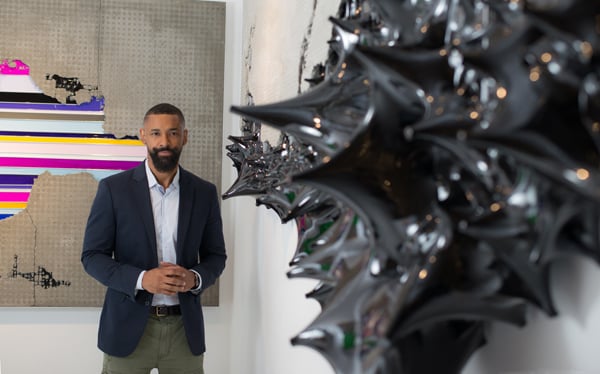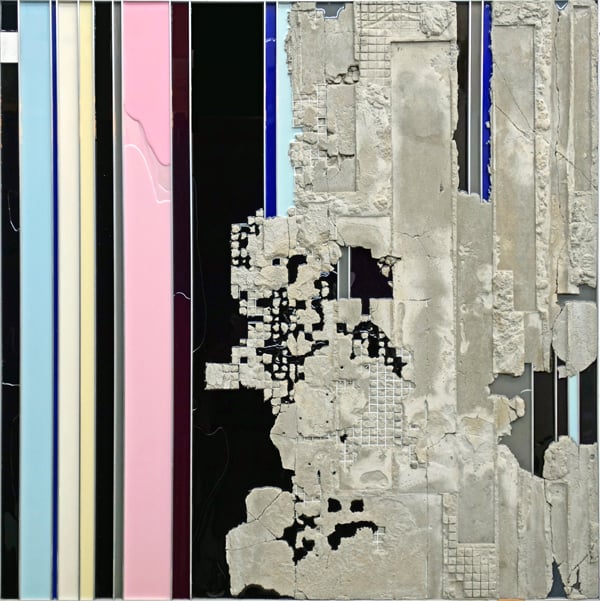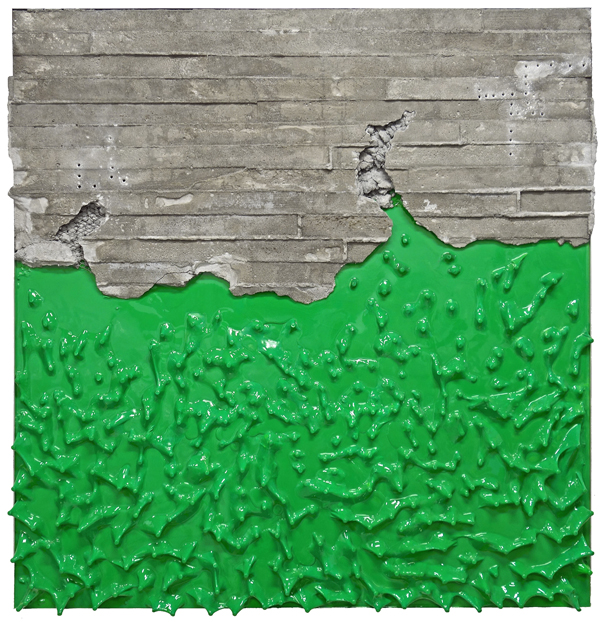People
artnet Asks: Sculptor Troy Simmons
Nature and Brutalism influence the tactile works of Troy Simmons.

Nature and Brutalism influence the tactile works of Troy Simmons.

Artnet News

Nature and Brutalism influence the tactile works of Troy Simmons, who appropriates tools and materials commonly used in construction projects. His mixed-media pieces are subjected to deconstructive processes in the artist’s attempt to grapple with the relationship between uninhibited nature and urban order. Simmons will be exhibiting next at Art Paris with JanKossen Contemporary.
When did you know you wanted to be an artist?
Childhood explorations, through the woods of East Texas, exposed me to the unique characteristics of a plant called Berchemia Scandens. It wraps itself around nearby objects, while trying to reach sunlight, strangling its host to the point of destruction. The plant is usually chopped and destroyed to control its widespread growth. After bringing a few cut pieces back to my home in Houston, my mind was filled with thoughts of this plant growing free and uncontrolled in an urban environment. The juxtaposition of concrete, metal, and wood, harmonizing while competing for space, pushed me to become an artist.
Do you have a motto for yourself or your artistic process?
I’m not sure if I’d considered this my motto, but a hammer is my paintbrush and Home Depot is my art supply store. To be more specific, I repurpose construction products to execute my ideas.
I work with a wide variety of materials and tools: chisels, lasers, levels, upholstery tools, auto paint, acrylics, resin, and aluminum, to name a few. I enjoy learning and experimenting with different materials, stretching the limits of their intended use.
Describe your creative process. What kinds of patterns, routines, or rituals do you have?
I approach each piece like a construction project. I create sketches, 3D renderings, and detail drawings before physically starting a piece. The framing and structural parts of my work have to be precisely engineered. After laying the concrete, I begin the process of deconstruction. Sometimes, I’ll drop the piece, allowing the characteristics of concrete to freely take over. I then use hammers, chisels, and drills to sculpt the concrete into the desired form. I’m a night dweller, so most of my ideas usually come while most are sleeping. Midnight is the peak of my creative day, constructing frames and mixing concrete. I usually listen to a musician by the name of Pantha Du Prince while I work.

Troy Simmons, 3von (2014). Courtesy of the artist.
Do you ever experience artist’s block? What do you do to overcome it?
Fortunately, I have not truly experienced artist’s block so far. Most of my pieces take from two to six months to complete. So, I usually have more of a problem deciding which ideas I want to bring to life. To overcome this, I try to create pieces that fit a specific space or location I’ve seen or visited in the past.
If you could own any artwork, what would it be and why?
If space was no issue, I would love to own the Yugoslav World War II monument located in Tjentiste, Bosnia. I love the precise, yet free-formed characteristics of the piece.
If you could have dinner with any three artists, living or dead, who would you choose?
I’m most influenced by architects (artists) from the Brutalism movement of the 1950s and 1960s. I spent time exploring southern Germany and toured a church called Feldbergkirche (Feldberg Church) by architect Rainer Disse. That was my first experience with postwar modern Brutalism. I was intrigued by the large geometric shapes, created entirely with board-formed concrete. The hard, straight lines of the structure, surrounded by the Black Forest seemed paradoxical but harmonious. I’d also love to sit down with Charles-Édouard Jeanneret, Richard Neutra, and the Croatian sculptor Vojin Bakić.
If you weren’t an artist, what do you think you would be doing?
Although nature was the driving force behind my art, it also guided me into the environmental science field. I worked as a lab technician for a water treatment company for three years before giving in to a more creative line of work. Not truly understanding the art world or what it had to offer, I pursued a degree in architecture. I worked as an architectural designer for a residential design/build firm in Oklahoma City until the economy crashed in 2008. These fields of work were just catalysts to help feed my creativity, so it’s hard to imagine my life without art.
How do you decide what to title your works?
Most of my titles are drawn from the inspiration behind the piece. My surroundings and experiences influence the naming of each piece. Everything from a weed growing through a crack in the sidewalk to the people in the isles of the local grocery store, all play a part in the inspiration and title of my work.

Troy Simmons, Botany 1 (2014). Courtesy of the artist.